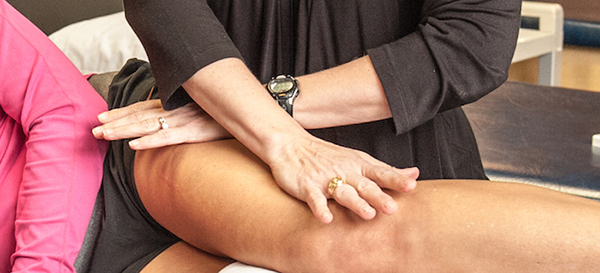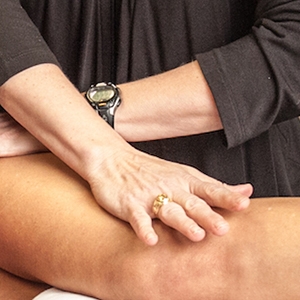
If you experience pain that doesn't ease up after your workout, or if exercise leaves you feeling rundown and fatigued, you may be overtraining. It's important to address pain early so that it doesn’t cause you to perform in a way that could cause an injury. Plus, working out in pain causes you to overcompensate which puts stress on other areas of the body. For example, runners may change their gait when they have knee pain, which could cause pain in the other knee or in other joints including the ankle or hip. Using a technique called myofascial release to relieve and even prevent pain can keep you moving!
At first glance it looks like a massage, but the techniques are different.
HOW IS MASSAGE DIFFERENT FROM MYOFASICAL RELEASE?
Massage involves stroking and kneading motions, usually administered with lubricants, making it easy for the therapist to slide their hands over the recipient’s skin. This is ideal for anyone with tension or tired muscles caused by exercise, sleeping in an odd position and just ordinary daily stresses. Massages usually last 30-60 minutes and can relieve muscle tension including the release of “knots” in the muscles. While people usually feel peaceful afterwards (although sometimes sore from the release of the muscle knots), it doesn’t typically address pain in the connective tissue.
Myofascial release applies sustained pressure on targeted areas of connective tissue (fascia) that surround your muscles and bones. This pressure is meant to release the restriction in the connective tissue so that you have greater range of motion and less pain. The physical therapist, who is trained in myofascial release, maintains pressure for three to five minutes at a time in the targeted area. Using steady pressure is the key. The fibers must be allowed sufficient time to soften and stretch. No lubricant is added to the skin so the therapist can locate and release the areas of connective tissue that are restricted.
WHO BENEFITS FROM EACH TECHNIQUE?
If you have muscle soreness from working out and/or from sitting at a desk, a massage could give you the tension release that you need to get rid of the knots and feel better.
If you notice persistent pain that doesn't dissipate even after icing and rest, myofascial release could be a good option. Many patients say that they start to feel immediate relief after just one session.
It's essential to pay attention to your body's signals - which include pain - and take care of yourself before you cause an injury from overtraining that could sideline you for weeks. To reach your highest performance goals, read more about myofascial release, then discuss your pain with one of our sports medicine specialists or sports trainers who understand the needs of athletes. You can also download our free ebook, How to Stay Active When You’ve Overtrained.







